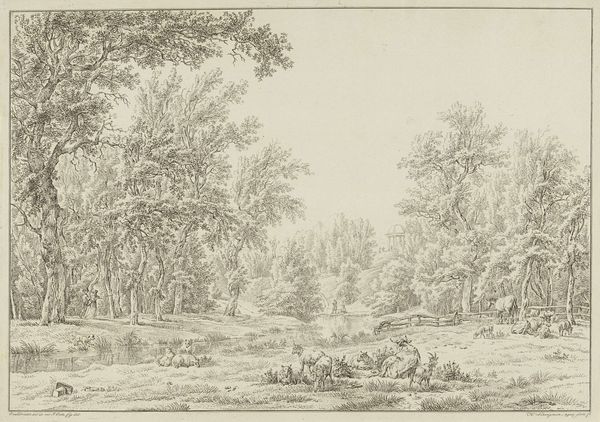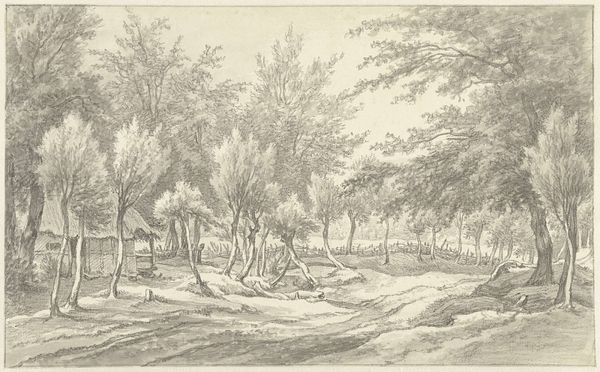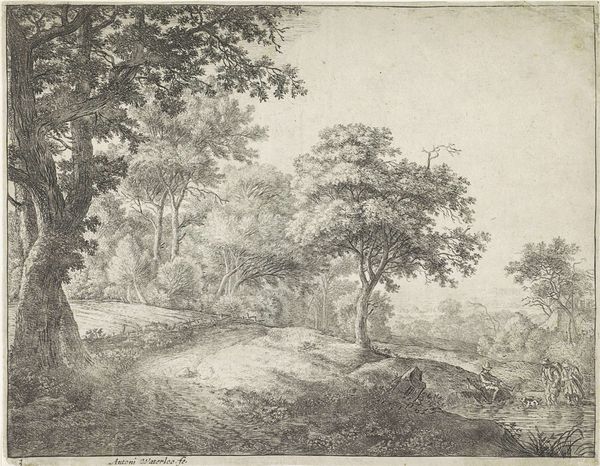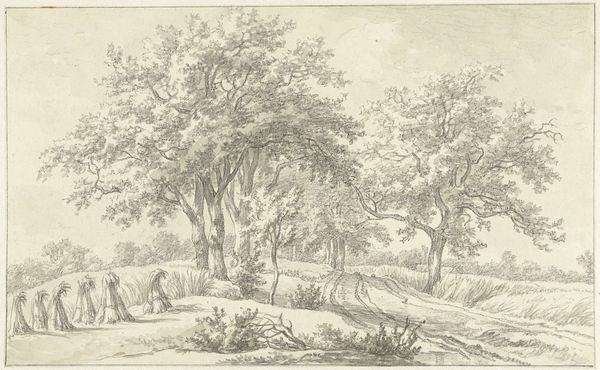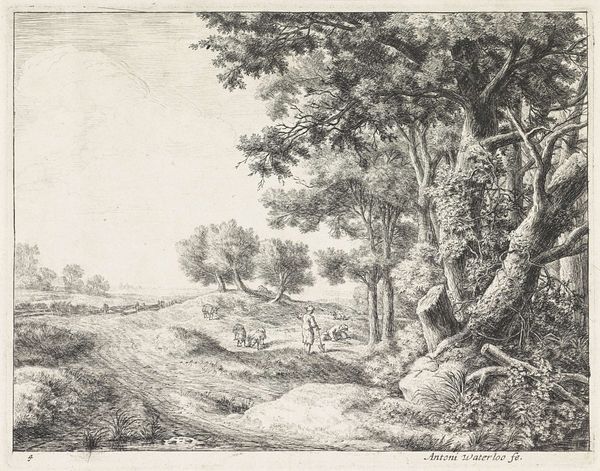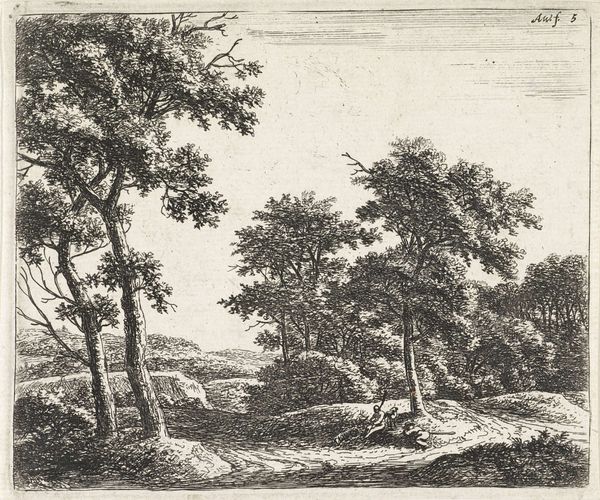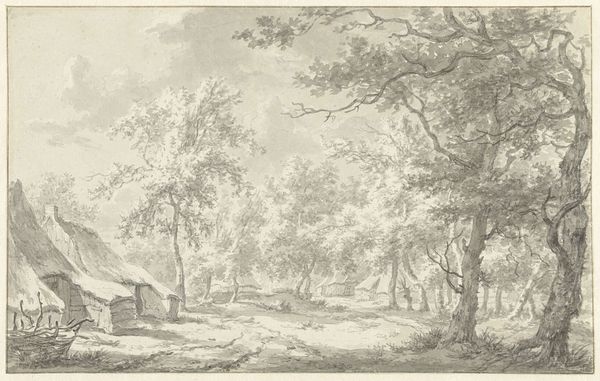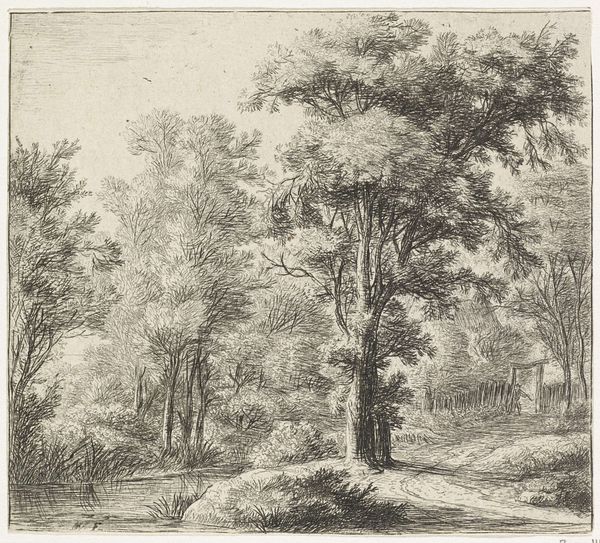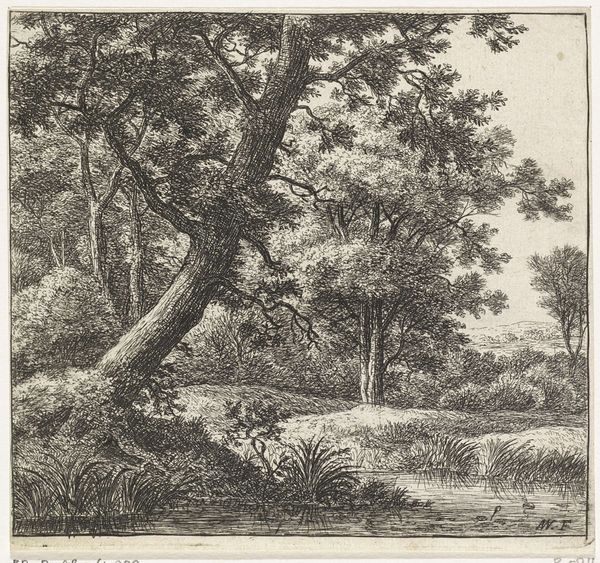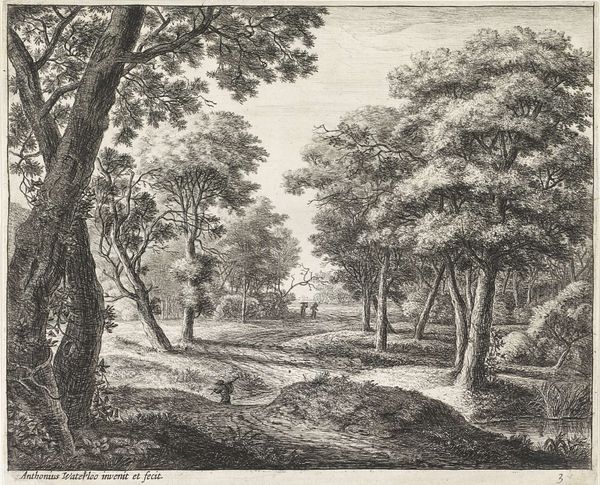
drawing, ink
#
pen and ink
#
landscape illustration sketch
#
drawing
#
mechanical pen drawing
#
pen illustration
#
pen sketch
#
pencil sketch
#
landscape
#
ink
#
romanticism
#
pen-ink sketch
#
botanical drawing
#
line
#
pen work
#
realism
#
initial sketch
Dimensions: height 444 mm, width 658 mm
Copyright: Rijks Museum: Open Domain
Editor: Here we have "Landschap met bomen, huizen en rechts een hek" or "Landscape with Trees, Houses, and a Fence on the Right," made sometime between 1801 and 1856 by Henricus Turken. It’s a drawing made with pen and ink, and it feels so calm and serene. I'm struck by the attention to detail. What can you tell me about it? Curator: This tranquil scene offers a glimpse into the relationship between artistic representation and evolving social attitudes toward the landscape. Consider the historical context: early 19th century. As urban centers grew, landscapes were increasingly romanticized as emblems of simpler times and national identity. How might this drawing be understood within the institutional framework of art at the time? Editor: You mean, like, how would it have been displayed and viewed? Curator: Exactly. Was this meant for public exhibition or private collection? The linear style, bordering on topographical, makes me wonder if this drawing wasn’t intended as a record, perhaps influencing later paintings or even engravings intended for a wider audience. Note also the deliberate placement of the fence – a symbol of land ownership and division – juxtaposed with the inviting, open path. How does this tension shape our understanding of the work? Editor: That's a really interesting point. I hadn't thought about the fence that way – as a socio-political boundary, not just part of the scenery. Curator: Consider also the role of institutions like the Rijksmuseum, which preserves and interprets these images. Museums influence what art is valued and how the public engages with art. Editor: So, it’s not just about what the artist put into the drawing, but also about the cultural values that we bring to it, even now. That gives me a lot to think about. Curator: Precisely. Looking at this artwork from today allows us to acknowledge these different interpretations. Hopefully, visitors can reflect on the dialogue that arises from our changing viewpoints.
Comments
No comments
Be the first to comment and join the conversation on the ultimate creative platform.
